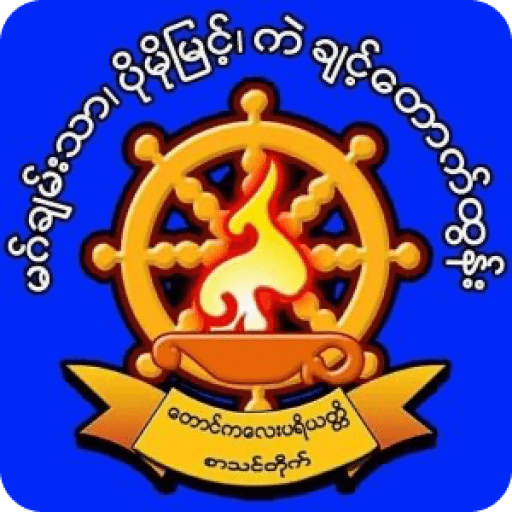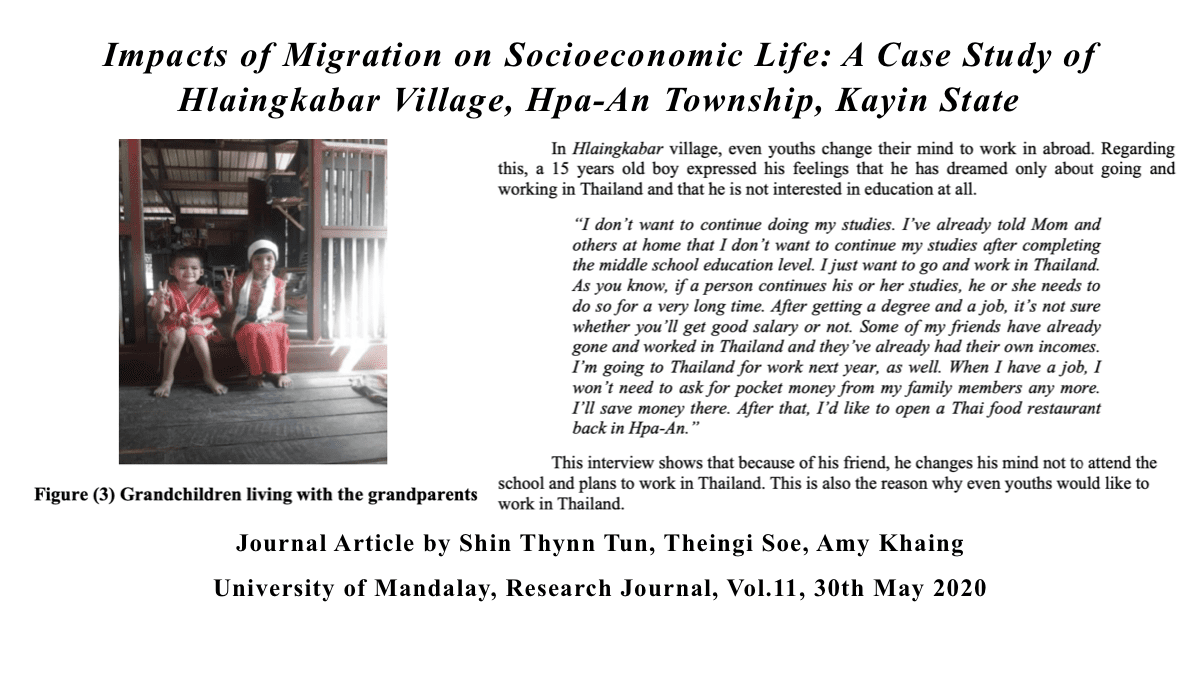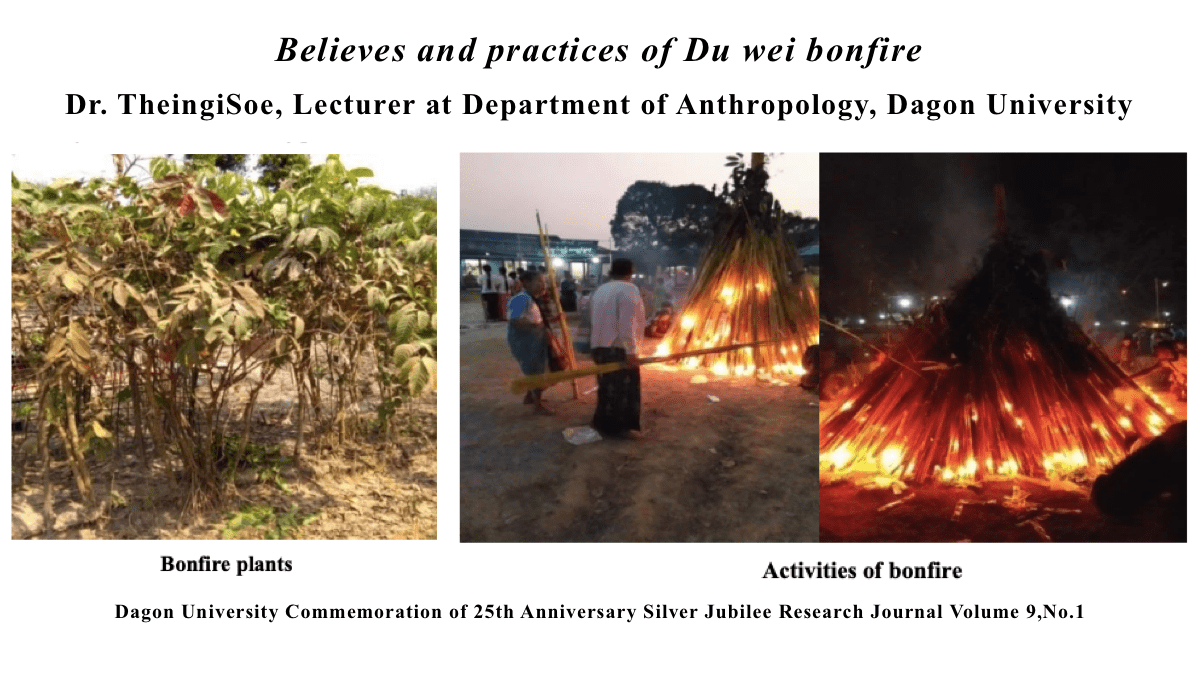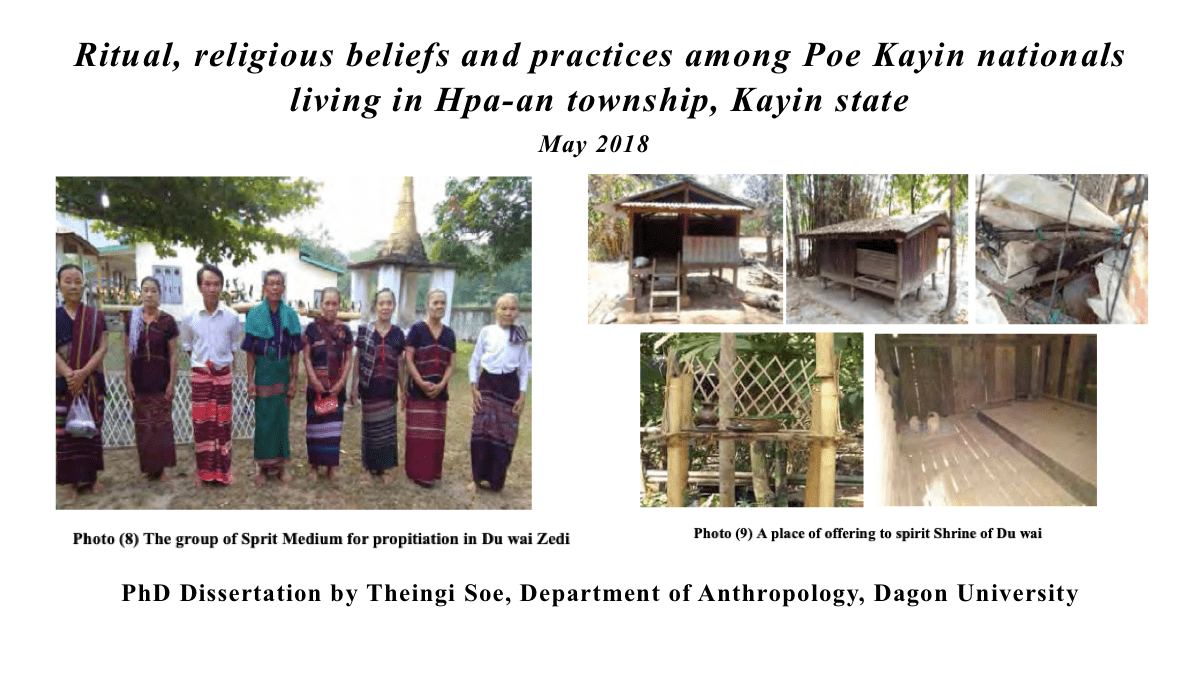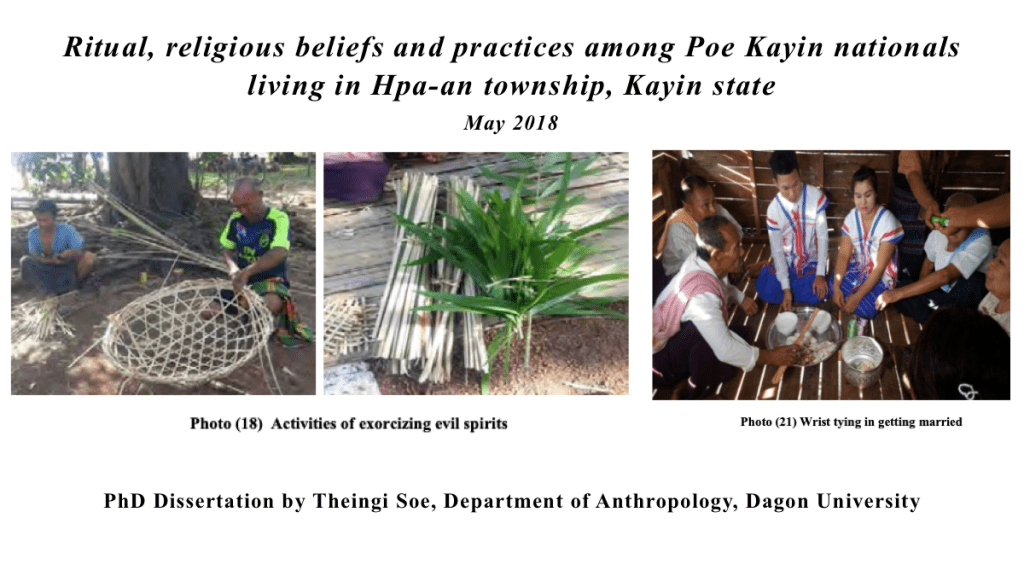Journal article
Shin Thynn Tun, Theingi Soe, Amy Khaing
University of Mandalay, Research Journal, Vol.11
30th May 2020
ABSTRACT
Migration is a crucial part of many people’s livelihood strategy, meaning the capabilities, assets and activities required for their means of living. The majority of the local people dwelling in Hlaingkabar village earn their living by depending on farming. The aim of this paper is to analyze the impacts of migration as an alternate livelihood strategy on socioeconomic life living in Hlaingkabar village, Hpa-An Township, Kayin State. This research applied ethnographic research methods, using both qualitative and quantitative methods. Most of the people living in Hlaingkabar village, Hpa-An Township, Kayin State are Kayin nationals. Hlaingkabar villagers depend on paddy growing, migration work, shopkeeping and odd jobs. Since 1998, family’s social, health and education conditions cannot support by only farming income because of decreases in the rice price, leading to push factors for the villagers to seek to solve their problems through other livelihood strategies, like migration. When they get contacts through their social networks to get job opportunities outside that support a regular income, we can see many pull factors that motivate them to migrate to Thailand as migrant workers. Gradually, due to the contacts of friends and relatives in 2015, both married and single women get more job opportunities than men. Consequently, the child birth rate of the village has become as low as two children per family. Those children, however, get chances to become educated more than before. This research concludes that on the one side migration changes have positive impacts on the local people to develop education, but on the other side it affects family structure, labor shortage in farming.
Keywords: Migration, livelihood, family structure, education
Original Source:
https://meral.edu.mm/records/5632
![]()
